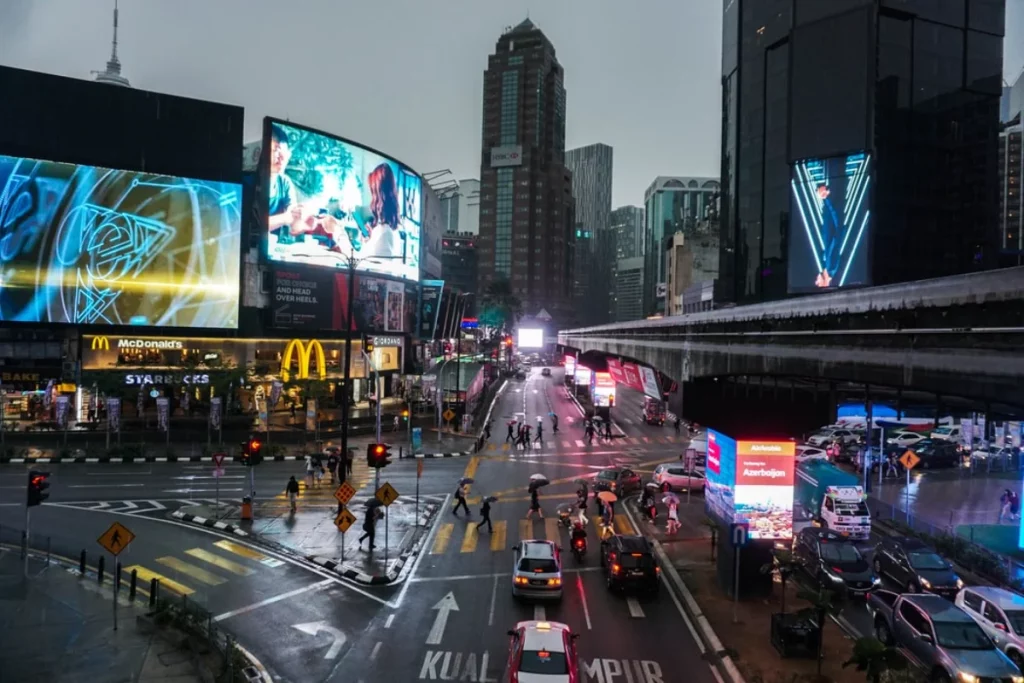In an era defined by digital transformation, where every facet of our lives intertwines with technology, it comes as no surprise that the advertising landscape is evolving at a breakneck pace. Traditional methods, while still effective, have seen a remarkable shift towards embracing the digital realm. One such revolution is the realm of Digital Out-of-Home (DOOH) advertising. In this article, we embark on a journey into the future of out-of-home advertising, unpacking the myriad aspects of DOOH technology, its evolution, its dynamic nature, its role in transit advertising, its connection to smart cities, and the exciting trends that lie ahead.
DOOH Technology Explained | Unpacking The Digital Out-Of-Home Experience
Let’s begin our exploration by understanding the essence of DOOH technology. Unlike static billboards of the past, DOOH is a dynamic and immersive form of advertising that engages audiences in real time. It harnesses the power of digital screens, ranging from large LED billboards in high-traffic areas to interactive displays in shopping malls and airports. These screens enable advertisers to deliver targeted and relevant content to a diverse range of audiences.
The magic of DOOH lies in its flexibility. Advertisers can remotely change content, schedule ads for specific times, and even incorporate interactive elements, such as touchscreens and augmented reality. This adaptability allows brands to create memorable, context-aware campaigns that resonate with viewers.

Introduction To DOOH Technology | Setting The Stage For The Future
To comprehend the significance of DOOH, it’s vital to appreciate the evolution of out-of-home advertising. Traditional billboards, while iconic, presented limitations in terms of content, targeting, and interactivity. DOOH technology, however, has shattered these constraints, ushering in a new era.
Digital screens have become ubiquitous in urban landscapes. They are no longer just static ads but dynamic canvases for storytelling. As we delve deeper into this transformation, we witness how DOOH has redefined the very concept of outdoor advertising.
The Evolution Of Out-of-Home Advertising | From Billboards To Dynamic Screens
The history of out-of-home advertising can be traced back to the 19th century, with the emergence of static billboards. For decades, these billboards remained largely unchanged, offering limited engagement with the audience. However, the dawn of the digital age brought about a revolution.
Dynamic screens equipped with high-resolution displays, integrated sensors, and connectivity emerged. These screens are not just spaces for advertisements; they are vehicles for experiences. Real-time updates, interactive elements, and audience engagement transformed DOOH into a dynamic medium capable of delivering captivating content.
Dynamic Content & Real-Time Engagement | The Power Of DOOH
The real power of DOOH lies in its ability to engage audiences in real time. Dynamic content can adapt to various factors, such as weather conditions, time of day, and audience demographics. For instance, an outdoor clothing brand can promote raincoats during a sudden downpour and switch to sunglasses as the sun emerges.
Moreover, interactivity plays a pivotal role. Touchscreens, QR codes, and augmented reality (AR) experiences empower viewers to interact with advertisements, creating a two-way communication channel. This level of engagement not only captures attention but also drives deeper connections with brands.

Transit Advertising In The Digital Age: Reaching Audiences On The Move
While DOOH can be found in various urban locations, it shines brightest in the realm of transit advertising. Buses, trams, subway stations, and airports have all embraced DOOH technology. This strategic placement allows advertisers to reach audiences while they are on the move, making transit advertising a dynamic and impactful facet of DOOH.
Imagine a commuter waiting for a train. Instead of staring at static billboards, they are treated to dynamic content that changes as the train approaches, providing real-time updates on departures, weather, and, of course, advertisements tailored to their interests.
DOOH’s Role In Smart Cities |Connecting Advertising To Urban Innovation
The rise of smart cities is inseparable from the evolution of DOOH. In the digital age, cities are becoming smarter, more connected, and data-driven. DOOH seamlessly integrates into this ecosystem, serving as a conduit between urban innovation and advertising.
DOOH screens can relay essential information, such as traffic updates, public service announcements, and emergency alerts. They can also participate in city-wide initiatives, such as promoting sustainability and cultural events. In this way, DOOH becomes an integral part of the urban fabric, enhancing the quality of life for city dwellers.
The Future Of DOOH | Predictions And Trends Shaping Out-Of-Home Advertising
As we conclude our deep dive into DOOH technology, it’s crucial to cast our gaze towards the future. The world of digital advertising is in a perpetual state of evolution, and DOOH is at the forefront of innovation.
One emerging trend is the integration of AI and machine learning into DOOH. These technologies will enable even more precise targeting, content optimization, and data-driven decision-making. Moreover, the adoption of 5G networks will enhance connectivity and enable more immersive experiences.
The future of out-of-home advertising is undeniably intertwined with DOOH technology. It has redefined how brands interact with audiences, transcending the limitations of traditional billboards. With its dynamic content, real-time engagement, and integration into smart cities, DOOH is poised to shape the advertising landscape for years to come.
In this age of digital transformation, DOOH technology represents not just an advertising medium but a testament to the boundless possibilities of technology and innovation. As the world continues to evolve, so too will DOOH, ensuring that the future of out-of-home advertising remains exciting, engaging, and full of promise.




